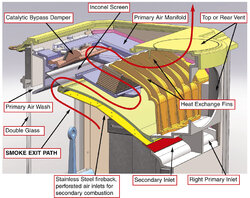I think he's referring to internal temps not the temp on the thermometer.
Makes sense. I always had the stovetop above 250F (500F internal) before engaging.
I burned 7 ash for weeks with no problems then I switched to some 4 year seasoned oak and I started having the cat plugging problem.
You may be onto something. My black locust is 4-6 years old, covered in the winter. The bark is loose and somewhat crumbly. Maybe that is a factor. In any case that is what I have and will have for the foreseeable future. Thanks.
Makes sense. I always had the stovetop above 250F (500F internal) before engaging.
I burned 7 ash for weeks with no problems then I switched to some 4 year seasoned oak and I started having the cat plugging problem.
You may be onto something. My black locust is 4-6 years old, covered in the winter. The bark is loose and somewhat crumbly. Maybe that is a factor. In any case that is what I have and will have for the foreseeable future. Thanks.




